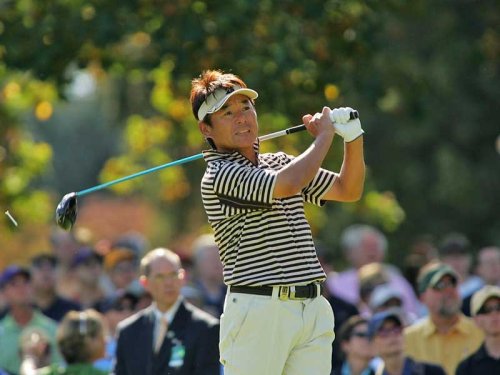You might not have heard about it, but golf history was made over the weekend at the WGC-HSBC Champions. Hideki Matsuyama of Japan became the first Asian-born winner of a World Golf Championship event since the series’ inception back in 1999, torching Sheshan Golf Club for a seven-stroke victory.
The win moved Matsuyama into the sixth spot in the Official World Golf Ranking, leapfrogging big names like Adam Scott, Bubba Watson and Danny Willett. It was also the 24-year-old’s third consecutive top two finish, as he won the Japan Open Golf Championship and finished solo second at the CIMB Classic in the two weeks directly preceding the WGC.
While that run of form has been impressive, it shouldn’t come as a surprise to golf fans. Matsuyama has more than delivered on his boundless potential since bursting onto the scene with a pair of major top 10s in 2013. He’s become a PGA Tour regular with wins at Muirfield Village and TPC Scottsdale, and he’s notched 11 podium finishes around the world over the last three years. His status as an elite player is secure.
But if Matsuyama has been as good as advertised, where are all the other Asian stars? At this writing, he and South Korea’s Byeong-Hun An are the only top 50 players who hail from the world’s largest continent. Other Asians dot the top 100, but Joe Ozakis they’re not — of that group, it appears that only Ryo Ishikawa has a chance to make a killing, and that’s only if he can put his injury woes aside and establish consistency, a big ask.
Of course, the simple answer is that golf is a British invention. While popular globally, the majority of its participants are from the UK and her former colonies, as well as a number of other Western European states.
But doesn’t it feel like there should be more Asian stars by now? The globalization of golf is nothing new, after all. Youth programs have existed in Japan for decades, while in China, the industry is exploding — dozens of courses have been built in the past decade alone.
Three years ago, you couldn’t so much as glance at your favorite golf site without seeing an article about the nascent internationalism within the sport. But it’s been almost 35 years since Isao Aoki’s historic victory at the Hawaiian Open, and just three of his countrymen have joined him as PGA Tour winners during that time. What gives?
For one thing, we should never have expected things to shift so quickly. Yes, China, Japan and South Korea have laudable youth golf programs, but the infrastructure and access are still severely lacking compared to countries like the U.S. and UK, and even smaller players like Australia and South Africa. This may change as time goes on, but it’s an issue that will be solved over the course of decades rather than mere months.
Furthermore, the readiness of some of these players may have been overstated. If you think back to the golf landscape in 2013, there wasn’t really another budding Asian superstar after Matsuyama. Rather than viewing him as the first of a new wave, we should have seen him for what he probably is: a once-in-a-generation kind of talent.
Finally, we have a kind of elephant in the room: the language barrier. Many Asian golfers are not fluent in English, the dominant tongue in the sport of golf. This detail doesn’t really affect the women’s game — the LPGA Tour is the only viable option for making a good income — but with more money in the men’s game, things are different. While the PGA Tour is the world’s most lucrative circuit, Japan and Korea have their own golf tours, and a male player can make decent money on them.
If not for the language barrier, we’d probably see more Japanese and Korean players travel to America to fight for a PGA Tour card. But even then, most would be peripheral players at best, especially with the challenge of figuring out a new batch of courses. If you can make a decent living while also enjoying the comforts of home, why wouldn’t you?
Make no mistake: Asian golf is still on the rise, and Asian golfers are surfacing more and more. But thanks to some real-life considerations, it may take years before we see them start to truly dominate.





